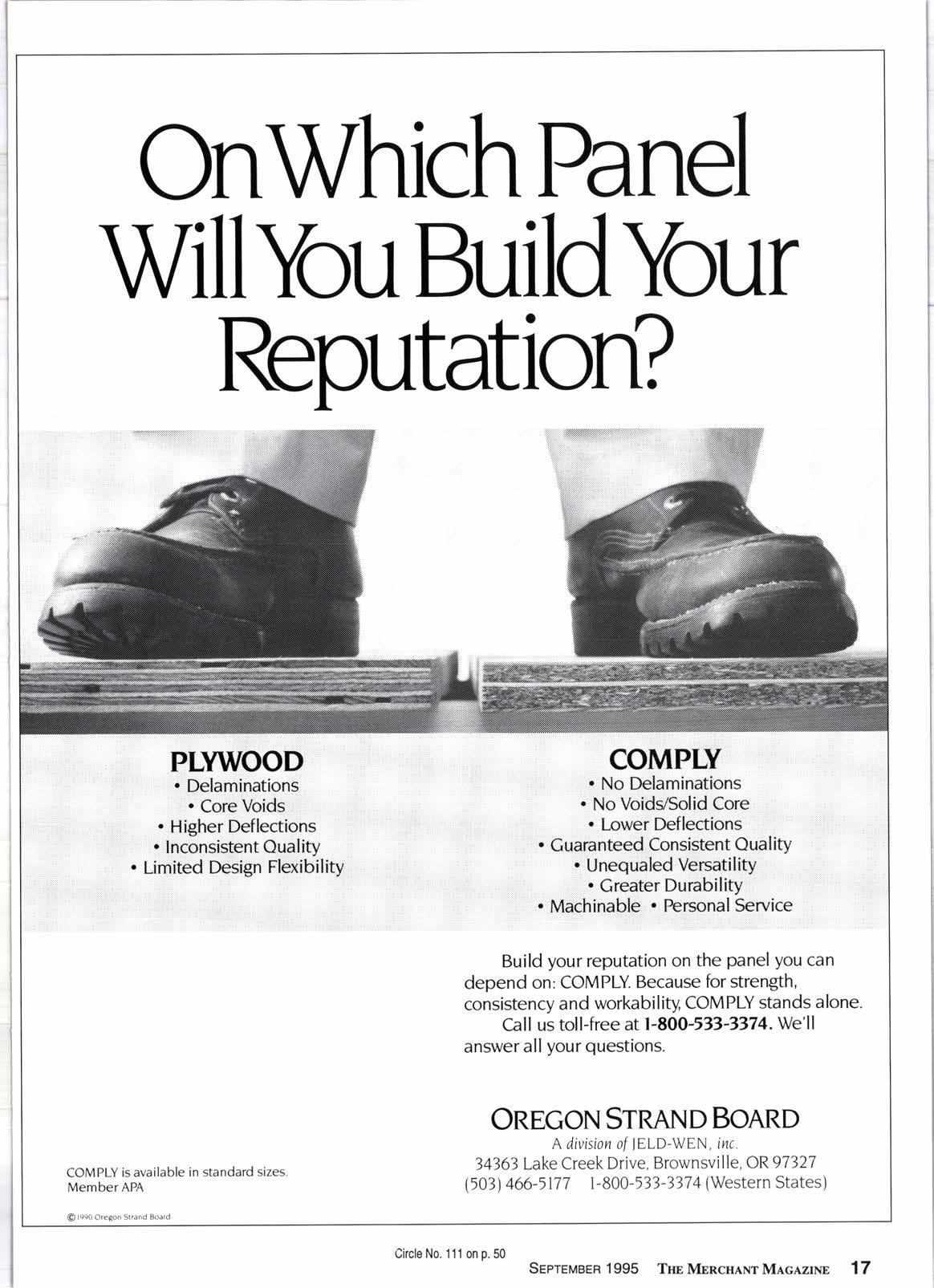
2 minute read
Should you add your own truss plant?
THE 1,400 to I,500 truss plants in I. the U.S. employ about 33,000, generate $3.5 billion to $4.5 billion in annual sales, and use 5 billion bd. ft. of lumber. An even more startling statistic is that 7 5Vo to 90Vo of all roof systems in the U.S. are built using wood trusses. as well as lj%o to l5vo of all floors. If you want to sell to builders, you have to offer wood trusses.
Builders may not even have a choice. "A lot of times, due to excessive load considerations, engineers require the use of wood trusses," notes Jim Ford, truss plant manager for nine-unit Spenard Builders Supply, Anchorage, Ak. "They can't use stick framing, so we lose the job if we can't offer wood trusses."
Often, a retailer will sell his builder customers a truss from a local truss plant without ever handling the truss himself. "The retailer sells the truss along with the lumber, windows and doors, but the truss plant delivers the trusses to the jobsite," explains Kirk Grundahl, P.E., executive director of the Wood Truss Council of America. "(The retailer) is just handling the paper on the truss and making a percentage on it."
But a growing number of contractor-oriented dealers have tried to cut out the middle man and now operate their own truss plants, ranging from single-unit Crissey Fowler Lumber, Colorado Springs, Co., to the 130store Wickes Lumber Co.
Spenard Builders Supply added a truss facility to serve eight of its nine locations to "provide our contractor sales people with one more thing to sell," explains Ford. "Now we can sell them the whole package, which is beneficial for them as well as us."
"Dealers may think they can take another step out of the distribution chain and absorb the extra margin,"
Story at a Glance
Pros and cons of adding your own truss plant ... key con- siderations: volume, legal liability, demand.
says Grundahl. "It's all a question of volume. If you have your own truss plant and you are only running it at 50Vo capacity, you're losing money. It could put you out of business."
The risk is real. "You must invest $50,000 to $150,000 to $200,000 jusr for a saw, then there's inventorying lumber. Your capital costs would easily be a half-million to $l million," he says.
Grundahl suggests that before making the plunge, a retailer should first work very closely with a single truss plant for a significant period of time. "And if I found that I was more than 50Vo of his business, I might buy the plant. But if I'm only 257o of his business, there's no way I can be in that business," he says.
Once in the truss manufacturing business, the biggest concern becomes the issue of liability. Problem areas are Workers' Compensation in the plant and, even more important, at the jobsite. "Once you get it to the jobsite, lifting those trusses and especially putting them in place, that's where injuries start to happen," Grundahl relates. "It has nothing to do with the trusses and everything to do with human beings. People take short cuts, they're not thinking, they get hurt and don't take responsibility for their own mistakes." Common maladies are back problems and carpal tunnel syndrome.
Improper erection and bracing techniques can also cause truss collapse or lead to other problems down the road. The legal risk is so great, many truss companies refuse to erect lrusses or deliver them on the top plate.
Most of all, Grundahl stresses, be cautious in contemplating getting into the truss manufacturing business. You probably will be better off "partnering" with an established producer, letting each party do what it does best.
"I think they need to give it some real thoughtful consideration," he says.
"(Adding a truss plant) is a big business decision. It's like hiring an employee. Until he's working for you for six months, you don't know what you've got."











